Welcome to our free classical music site

Do you write about classical music? Are you a blogger? Want to team up with Classical Connect? Send us a message, let's talk!

Do you write about classical music? Are you a blogger? Want to team up with Classical Connect? Send us a message, let's talk!
October 24, 2016. From Scarlatti to Berio. Four wonderful composers were born this week, three Italians and one Frenchman. Domenico Scarlatti, one of our all-time favorites, was born on October 26th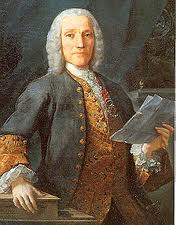 of 1685 in Naples. He probably studied music with his father, Alessandro Scarlatti, a famous opera composer. These days we know Domenico as the author of 555 clavier sonatas, most written while Scarlatti was serving at the courts of Spain and Portugal, but very few of them were published during his lifetime. His first publication, 30 Essercizi didn’t happen till 1738. The “exercises” are actually sonatas, which were later catalogued under different numbers, first by Alessandro Longo at the beginning of the 20th century, then later, by Ralph Kirkpatrick and others. Here’s the very first sonata in this cycle, Sonata in d Minor, K 1/L 366. It’s performed by Vladimir Bakk, a talented pianist, forgotten in his homeland, whose career never took off in his adopted country. Bakk was born in Moscow in 1944. He studied at the Moscow Conservatory with Yakov Zak, a famous pianist and pedagogue. In 1972 he won the Montevideo piano competition, and made several recordings with Melodia. It’s not clear what happened but at some point he fell into disfavor with Philharmonia, the main concert organization: he was banned from playing abroad and even in the larger cities of the Soviet Union (the retelling of his concert in a small town of Uralsk is hilarious and sad at the same time). The circumstances are not clear, but he was imprisoned twice. Bakk emigrated to Israel in 1990 and moved to the United States two years later. Even though his playing was lauded by the likes of Vladimir Horowitz, Martha Argerich and Vladimir Feltsman, his career never took off. He died in 2007. You can judge the quality of Bakk’s playing for yourself with this little jewel of Scarlatti.
of 1685 in Naples. He probably studied music with his father, Alessandro Scarlatti, a famous opera composer. These days we know Domenico as the author of 555 clavier sonatas, most written while Scarlatti was serving at the courts of Spain and Portugal, but very few of them were published during his lifetime. His first publication, 30 Essercizi didn’t happen till 1738. The “exercises” are actually sonatas, which were later catalogued under different numbers, first by Alessandro Longo at the beginning of the 20th century, then later, by Ralph Kirkpatrick and others. Here’s the very first sonata in this cycle, Sonata in d Minor, K 1/L 366. It’s performed by Vladimir Bakk, a talented pianist, forgotten in his homeland, whose career never took off in his adopted country. Bakk was born in Moscow in 1944. He studied at the Moscow Conservatory with Yakov Zak, a famous pianist and pedagogue. In 1972 he won the Montevideo piano competition, and made several recordings with Melodia. It’s not clear what happened but at some point he fell into disfavor with Philharmonia, the main concert organization: he was banned from playing abroad and even in the larger cities of the Soviet Union (the retelling of his concert in a small town of Uralsk is hilarious and sad at the same time). The circumstances are not clear, but he was imprisoned twice. Bakk emigrated to Israel in 1990 and moved to the United States two years later. Even though his playing was lauded by the likes of Vladimir Horowitz, Martha Argerich and Vladimir Feltsman, his career never took off. He died in 2007. You can judge the quality of Bakk’s playing for yourself with this little jewel of Scarlatti.
Niccolò Paganini, the great Italian violinist, was born on October 27th of 1782 in Genoa. His best known composition is a cycle of 24 Caprices, which were written between 1802 and 1817. Each Caprice is a devilishly difficult etude, emphasizing certain technical aspect of violin playing. Here is Salvatore Accardo, one of the greatest interpreters of Paganini’s music, playing Caprice no. 3 in e minor, “Octaves.”
Georges Bizet never gets enough attention from us. An opera composer, he’s mostly famous for Carmen, which was premiered three months before Bizet’s untimely death (he was only 37). The premier was panned by the critics, and the next performance, after Bizet’s death, was lauded by the same. Bizet was married to Geneviève, daughter of the composer and Bizet’s teacher Fromental Halévy. Geneviève, who outlived George by half a century and later opened a salon popular with nobility, politicians and literary figures, was one of the models for Marcel Proust’s Duchesse de Guermantes (the main inspiration for the character, Comtesse Greffulhe, frequented Geneviève’s salon). George and Geneviève had a son, Jacques, a close friend of Proust’s. In addition to operas, Bizet wrote some piano music; here’s his Jeux d'enfants (Children's Games) for piano four hands. It’s performed by Amy and Sara Hamann.
Luciano Berio, one of the most interesting composers of the second half of the 20th century, was born on October 24th of 1925. We wrote about him here and, without a doubt, will do so again.Permalink
October 17, 2016. Liszt and Marenzio. Several composers were born this week. The most famous of them is Franz Liszt, born on October 22nd of 1811. We love him, despite his somewhat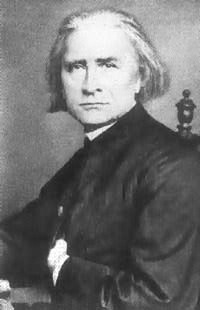 diminished reputation (these days he’s performed less frequently than, for example, in the mid-20th century). We’ve written about him many times, even publishing several short articles on his piano cycle, Années de Pèlerinage. So this time we’ll just play some of his music – Piano concerto no. 1, for example. It’s said that Liszt composed the theme of the first movement in 1830, when he was 19, but completed the concerto almost 20 years later, in 1849. He premiered it six years later, in 1855, in Weimar, with an orchestra conducted by his good friend, Hector Berlioz. (Liszt, the greatest piano virtuoso of his – and probably of any – time, stopped concertizing around 1847, settling in Weimar, but still gave occasional performances). Here it is, in a brilliant, exhilarating performance by Sviatoslav Richter, with Kirill Kondrashin conducting the London Symphony orchestra. The recording was made in 1961.
diminished reputation (these days he’s performed less frequently than, for example, in the mid-20th century). We’ve written about him many times, even publishing several short articles on his piano cycle, Années de Pèlerinage. So this time we’ll just play some of his music – Piano concerto no. 1, for example. It’s said that Liszt composed the theme of the first movement in 1830, when he was 19, but completed the concerto almost 20 years later, in 1849. He premiered it six years later, in 1855, in Weimar, with an orchestra conducted by his good friend, Hector Berlioz. (Liszt, the greatest piano virtuoso of his – and probably of any – time, stopped concertizing around 1847, settling in Weimar, but still gave occasional performances). Here it is, in a brilliant, exhilarating performance by Sviatoslav Richter, with Kirill Kondrashin conducting the London Symphony orchestra. The recording was made in 1961.
Liszt is not the only composer born this week. We’ve never written about Luca Marenzio, an Italian Renaissance composer famous for his madrigals. Marenzio was born on October 18th of 1553, or at least that’s what the musicologists surmise. To place him within the timeline of Italian music, Marenzio was one year older than Giovanni Gabrieli and about eight years younger than Luzzasco Luzzaschi about whom we wrote just last week. Marenzio was born near Brescia in Northern Italy. When he was 25 years old, he was hired by Cardinal Luigi d’Este. The Cardinal was a son of Ercole II d'Este, Duke of Ferrara and Modena who in turn was the eldest son of Duke Alfonso I d'Este and the famous (or, rather, infamous) Lucrezia Borgia. Marenzio worked for the Cardinal as maestro di capella for eight years, till the Cardinal’s death. Luigi d’Este had two palaces in Rome and also maintained the enormous Villa d'Este, outside of Rome, which was built by his uncle, Cardinal Ippolito II d'Este (Ippolito, also a patron of arts, brought Palestrina to the Villa to take care of the music there). While in d’Este’s employ, Marenzio composed a large number of madrigals which were published not just in Italy but also in Antwerp, Nuremberg and London. Luigi d’Este died in 1586 but Marenzio stayed in Rome as a freelance composer. About a year later he entered the service of Cardinal Ferdinando de Medici, who soon after became the Grand Duke of Tuscany. Marenzio moved to Florence, where he stayed till 1589. Upon leaving Florence, he returned to Rome, where he had a number of patrons, including the Pope himself. The pope sent him on an unusual trip, to the court of the King of Poland, Sigismund III Vasa. Marenzio stayed in Warsaw for almost two years. He returned to Rome in 1598 and died soon after, age 45, on August 22nd of 1599. It’s somewhat of a mystery why Marenzio isn’t known better these days. The best of Marenzio’s madrigals are beautiful, full of wonderful, sometimes unusually chromatic sonorities. Here are three examples, Liquide perle amor from 1580, Bascami mille volte from 1585 and Et ella ancide, e non val c'huom si chiuda from 1599, the last year of his life; all three madrigals are for five voices, Marenzio’s preferred type. They are performed by Concerto Italiano conducted by Rinaldo Alessandrini.
Permalink
October 10, 2016. An Italian composer with an unusually sounding name, Luzzasco Luzzaschi, was born in Ferrara around 1545; he lived there practically all his life. Luzzaschi is probably more famous as a teacher and a keyboard player, but he was also a fine composer. He studied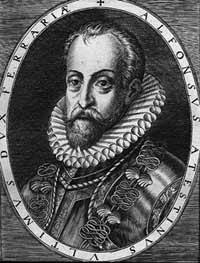 music and the organ, playing at an early age and became an organist at the court of the Duke Alfonso II d’Este at 16; he was promoted to the first organist at 19. During the second half of the 16th century, the court was a glorious place, Duke Alfonso being a major patron of arts. Luzzaschi remained the first organist for the rest of his career, but his duties were broadened: he composed, took charge of the court orchestra and trained young musicians (Ippolito Fiorini was formally the maestro di cappella at the court, but his duties seem to have been more administrative). Sometime around 1570 Luzzaschi took over the Duke’s chamber music concerts. The concerts were organized as “musica secreta” (secret music) for a small and very exclusive audience; the repertory of these concerts was kept secret, but it’s assumed that some of it was written by Luzzaschi himself. During these concerts, Luzzaschi usually played on a keyboard (by that time he was considered one of the finest keyboard players around); some instrumental music was performed as well, but the main attraction was a group of highly skilled women singers, called Concerto delle Donne. An ensemble of female voices was highly unusual for that time. The initial Concerto consisted of several very talented but amateur singers, but eventually professional ones were hired as well. By the 1580s Concerto started performing in public and their fame spread all over Italy. Apparently, every singer in the ensemble was a virtuoso, and there was no group of equal quality in all of the country; Luzzaschi has to be given credit as their music director. Much of the music performed by the Concerto was written by Luzzaschi, but they also performed madrigals written for them by Carlo Gesualdo, Lodovico Agostini and many other noted composers.
music and the organ, playing at an early age and became an organist at the court of the Duke Alfonso II d’Este at 16; he was promoted to the first organist at 19. During the second half of the 16th century, the court was a glorious place, Duke Alfonso being a major patron of arts. Luzzaschi remained the first organist for the rest of his career, but his duties were broadened: he composed, took charge of the court orchestra and trained young musicians (Ippolito Fiorini was formally the maestro di cappella at the court, but his duties seem to have been more administrative). Sometime around 1570 Luzzaschi took over the Duke’s chamber music concerts. The concerts were organized as “musica secreta” (secret music) for a small and very exclusive audience; the repertory of these concerts was kept secret, but it’s assumed that some of it was written by Luzzaschi himself. During these concerts, Luzzaschi usually played on a keyboard (by that time he was considered one of the finest keyboard players around); some instrumental music was performed as well, but the main attraction was a group of highly skilled women singers, called Concerto delle Donne. An ensemble of female voices was highly unusual for that time. The initial Concerto consisted of several very talented but amateur singers, but eventually professional ones were hired as well. By the 1580s Concerto started performing in public and their fame spread all over Italy. Apparently, every singer in the ensemble was a virtuoso, and there was no group of equal quality in all of the country; Luzzaschi has to be given credit as their music director. Much of the music performed by the Concerto was written by Luzzaschi, but they also performed madrigals written for them by Carlo Gesualdo, Lodovico Agostini and many other noted composers.
Luzzaschi was also famed as a teacher and mentor. Frescobaldi studied with him; it’s said that Gesualdo, who went to Ferrara to marry the Duke's niece, Leonora d'Este, was mostly interested in meeting Luzzaschi (on that occasion, Gesualdo wrote several canzoni for the Concerto delle Donne). Many composers of the Roman School also studied with Luzzaschi. Things changed considerably after Duke Alfonso’s death in 1597. The Duke didn’t leave any heirs, whether legitimate or not. Alfonso’s cousin, Cesare d'Este, took over, but this succession wasn’t recognized by the Pope. A year later Ferrara was incorporated into the Papal States, so Cesare and the court moved to Modena. To run the government, the Pope appointed a legate, Cardinal Pietro Aldobrandini. Luzzaschi stayed in Ferrara and joined the Cardinal’s retinue; in 1601 he accompanied the Cardinal on a trip to Rome. On that occasion, he arranged for the printing of a book of his madrigals.
Luzzaschi died in Ferrara on September 10th of 1607. Here are two madrigals by Luzzaschi, T'amo mia vita and Cor mio, deh non languire. They are performed by Consort of Musicke under the direction of Anthony Rooley.Permalink
October 3, 2016. Schütz et. al. Three famous composers were born this week: Heinrich Schütz, probably the most important German composer of the “pre-Bach” era, on October 8th of 1585;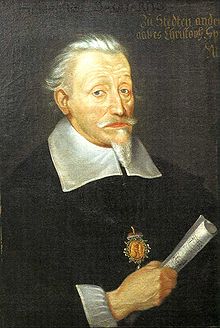 Giuseppe Verdi, the greatest Italian opera composer of the 19th century, on October 9th of 1813, and Camille Saint-Saëns, a very popular Frenchman, also born on October 9th, but of 1835. We've written about all three many times, for example here, here and here, so today we’ll illustrate their lives through several compositions. Schütz worked during a transitional period: he was born when the greatest Renaissance composers such a s Palestrina or Orlando di Lasso were still active; when he died in 1672, Baroque was all the rage. Schütz was a traditionalist. He was deeply influenced by Giovanni Gabrieli, with whom he studied in Venice from 1608 through 1612. It so happened that the young Schütz became a choir-boy at the court of Landgrave Moritz of Hessen-Kassel, a generous patron of the arts. At the time, Italy was the musical center of the world, and the Landgrave used to send some of his more gifted musicians to study there, providing them with a generous stipend. Early in the 17th century, Gabrieli was one of the most famous living composers in Europe, so Landgrave sent his talented young charge to study in Venice. The plan was for Schütz to stay there for two years, but Gabrieli was so impressed with his pupil’s progress that he asked Moritz to allow Schütz to stay in Venice another year, “since he is doing so well not only in composition but also in organ playing,” as Gabrieli put it. Even though Gabrieli was almost 30 years older than Schütz, it’s clear that the teacher and the pupil developed very close ties: in his will Gabrieli bequeathed his rings to Schütz. Gabrieli died in 1612, and Schütz left Venice soon after. Gabrieli was famous for his polichoral works, and here is Schütz’s glorious Saul, Saul, was verfolgst du mich?, from Symphoniae sacrae (Book 3), written in a similar style. Book 3 of his “Sacred symphonies” was published in Dresden in 1650. English Baroque Soloists and Monteverdi Choir are led by John Eliot Gardiner.
Giuseppe Verdi, the greatest Italian opera composer of the 19th century, on October 9th of 1813, and Camille Saint-Saëns, a very popular Frenchman, also born on October 9th, but of 1835. We've written about all three many times, for example here, here and here, so today we’ll illustrate their lives through several compositions. Schütz worked during a transitional period: he was born when the greatest Renaissance composers such a s Palestrina or Orlando di Lasso were still active; when he died in 1672, Baroque was all the rage. Schütz was a traditionalist. He was deeply influenced by Giovanni Gabrieli, with whom he studied in Venice from 1608 through 1612. It so happened that the young Schütz became a choir-boy at the court of Landgrave Moritz of Hessen-Kassel, a generous patron of the arts. At the time, Italy was the musical center of the world, and the Landgrave used to send some of his more gifted musicians to study there, providing them with a generous stipend. Early in the 17th century, Gabrieli was one of the most famous living composers in Europe, so Landgrave sent his talented young charge to study in Venice. The plan was for Schütz to stay there for two years, but Gabrieli was so impressed with his pupil’s progress that he asked Moritz to allow Schütz to stay in Venice another year, “since he is doing so well not only in composition but also in organ playing,” as Gabrieli put it. Even though Gabrieli was almost 30 years older than Schütz, it’s clear that the teacher and the pupil developed very close ties: in his will Gabrieli bequeathed his rings to Schütz. Gabrieli died in 1612, and Schütz left Venice soon after. Gabrieli was famous for his polichoral works, and here is Schütz’s glorious Saul, Saul, was verfolgst du mich?, from Symphoniae sacrae (Book 3), written in a similar style. Book 3 of his “Sacred symphonies” was published in Dresden in 1650. English Baroque Soloists and Monteverdi Choir are led by John Eliot Gardiner.
Guiseppe Verdi wrote 25 operas, practically all of them of the highest order. The first two, Oberto and Un giorno di regno, are rarely performed, but his third one, Nabucco, became popular and remained so ever since. Still, considering the incredible wealth of musical material and its quality, Rigoletto, written in 1851 and considered a masterpiece of Verdi’s mid-career, stands out. Just to mention some of the popular arias: the Duke’s aria Questa o quella, Rigoletto’s and Gilda’s duet "Figlia!" "Mio padre!", the Duke’s È il sol dell'anima, followed by the duet Addio, addio. And then Gilda’s amazing aria Gualtier Maldè!... Caro nome – and we’re still in the middle of the first act! There are several dozen great recordings of Rigoletto. Between 1954 and 1964 alone there were probably ten of them, featuring opera giants, like Maria Callas, Giuseppe di Stefano, Mario Del Monaco, Cesare Siepi, Giulietta Simionato, Robert Merrill, Jussi Björling, Ettore Bastianini, Alfredo Kraus, Renata Scotto, Fiorenza Cossotto, Gianni Raimondi, Anna Moffo, Dietrich Fischer-Dieskau, Carlo Bergonzi. What an absolutely astounding decade! Here’s Maria Callas in Gualtier malde! Caro nom, and here – the famous quartet Bella figlia dell’amore from Act III, with Pavarotti, Sutherland, Leo Nucci and Isola Jones.
Camille Saint-Saëns, a rather conservative composer, wrote quite a bit of music that was not of the very first rate, but who hasn’t? Some of his pieces are brilliant, and that’s what counts. Here’s an example, The Carnival of the Animals (Le carnaval des animaux), Andrea Licata conducts the Royal Philharmonic Orchestra.Permalink
September 26, 2016. Brahms’s Klavierstücke, op. 76. In the past we published a series of articles about Brahms’s late piano works: 7 Fantasien, op. 116 (here), 3 Intermezzi op. 117 (here), 6 Klavierstucke op. 118 (here), and 4 Klavierstucke op. 119 (here). Today we’ll publish an article on a piano set he created earlier, sometime between 1871 and 1878, titled 8 Klavierstücke, op. 76.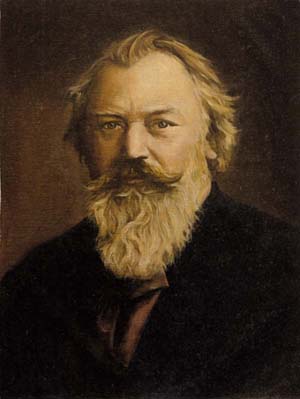 We have two sets of recordings, one made by the English pianist Sam Armstrong, another – by the American, Maya Hartman. ♫
We have two sets of recordings, one made by the English pianist Sam Armstrong, another – by the American, Maya Hartman. ♫
The Eight Klavierstücke, op. 76 was a marked departure for Brahms in the realm of piano music—not since the composition of the Ballades in the mid-1850s had he composed a set of miniatures. The sonata had long since disappeared; the only three Brahms left to us were products of his youth. The piano music of his middle period was dominated by large-scale variation sets. The last of these sets, the Paganini Variations, was also his last work for solo piano before the composition of the 8 Klavierstücke in the late 1870s, a space of fifteen years. Viewed as a part of Brahms’s entire output for the piano, the Klavierstücke and the contemporaneous 2 Rhapsodies, op. 79 form the transition from those Classically-oriented pieces of his youth and middle period, to the deeply introspective Romanticism of his last works for piano, namely, opp. 116-19. With the Klavierstücke, lengthy discourses are abandoned in favor of a greater economy of means, a trend that pervaded most of Brahms’s late music, even in large-scale works, in which fewer and fewer notes were forced to bear an ever increasing portion of a piece’s emotional weight. Concomitantly, there is also a greater emphasis on motivic development, a feature really of all of Brahms’s music, but now driven to even more exacting and imaginative lengths.
The set begins with the fantasia-like F-sharp minor Capriccio. Ominous arpeggios reach up out of the bass register in the opening measures, intermixed with a distinctive stepwise descent through the interval of a third that becomes an important accompanimental figure to the principal melody which later emerges. The melody itself, which appears after a fortissimo close on the dominant, emphasizes two semitone movements within its initial measures—the first, moving upwards, and the latter, downwards. This motif becomes the focus of the Capriccio’s discourse. Initially, beginning on the dominant, its position within the scale and its key is later changed, yet its melodic pattern remains unchanged, as it is woven into the endless accompaniment of broken chords. A strict inversion of the melody even appears immediately before the reprise of the opening fantasia. This reprise, though structurally similar to the opening statement, is greatly changed. The left hand takes the burden of presenting the motivic material while the right now provides brilliant filigree in the upper register. The lengthy coda returns to working out the melody of the middle section, presenting it in octaves against repeated statements in augmentation of descending thirds. However, its final statements take place betwixt a firm tonic pedal in the bass and the return of the fanciful passagework in the treble, as the piece dies away into a conclusion in F-sharp major. (Read more here).Permalink
September 19, 2016. From the 18th century to the 20th. One of the most important French composers of the baroque era and two major composers of the 20th were born this week.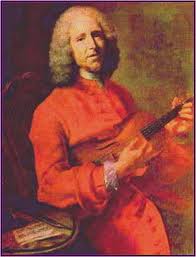 , who followed Lully to become the leading French opera composer, was born on September 25th of 1683 in Dijon, the capital of Burgundy. Little is known about Rameau’s early years: records are few, and he didn’t like to talk about it either. His father was an organist, and Jean-Philippe was taught music from an early age. When he was around 18, he was sent to Milan, to study music, but the visit was short. In 1706, after working as an organist in several churches in the provinces, Rameau went to Paris, where he found a similar position at the Collège (now Lycée) Louis-le-Grand, a very prestigious institution (one of the pupils there was Voltaire, who would later collaborate with Rameau on several operatic and theatrical productions). In 1709 he returned to Dijon to succeed his father as the organist at the church of Notre-Dame. He didn’t stay there long, though: in a couple of years he moved to Lyon, and then to Clermont. All this was transitory, until, in June of 1722, at the age of 38 but still practically unknown, he arrived in Paris, where he would live for the rest of his life. What made him famous was not his music but theoretical treaties on harmony, which were published that year. Four years later he wrote “New System of Music Theory” which established him as a major theorist not just in France, but in all of Europe. Even though he had already published a book of harpsichord music, he was still unknown as a composer. Rameau’s first composition that Parisians ever heard was an inconspicuous incidental music, written for a play staged at a temporary theater during the annual fair in Saint-Germain. The second book for the harpsichord appeared in 1725, and the third, Nouvelles suites de pieces de clavecin, two years later. Nouvelles suites, which included a piece called Les sauvages (here), became popular. Even so, his career wasn’t going anywhere: he couldn’t secure a position of organist at any major Parisian church (even though he tried many times) and he was still better known as a theorist rather than a composer. What Rameau really wanted was to write an opera. He was 50 when he presented the first one, Hippolyte et Aricie; the premier became an event but also created a huge controversy. The opera, first staged on October 1 of 1733 in the Théâtre du Palais-Royal, immediately divided the listening public into two camps: those who liked it and those who felt that it flouts all the principals established by Rameau’s predecessor, Jean-Baptiste Lully, and therefore isn’t good. In any event, Rameau’s reputation as a major opera composer was established, and though 50, he had many productive years ahead of him. Here’s a short section from Act I, Rendons un éternel homage.
, who followed Lully to become the leading French opera composer, was born on September 25th of 1683 in Dijon, the capital of Burgundy. Little is known about Rameau’s early years: records are few, and he didn’t like to talk about it either. His father was an organist, and Jean-Philippe was taught music from an early age. When he was around 18, he was sent to Milan, to study music, but the visit was short. In 1706, after working as an organist in several churches in the provinces, Rameau went to Paris, where he found a similar position at the Collège (now Lycée) Louis-le-Grand, a very prestigious institution (one of the pupils there was Voltaire, who would later collaborate with Rameau on several operatic and theatrical productions). In 1709 he returned to Dijon to succeed his father as the organist at the church of Notre-Dame. He didn’t stay there long, though: in a couple of years he moved to Lyon, and then to Clermont. All this was transitory, until, in June of 1722, at the age of 38 but still practically unknown, he arrived in Paris, where he would live for the rest of his life. What made him famous was not his music but theoretical treaties on harmony, which were published that year. Four years later he wrote “New System of Music Theory” which established him as a major theorist not just in France, but in all of Europe. Even though he had already published a book of harpsichord music, he was still unknown as a composer. Rameau’s first composition that Parisians ever heard was an inconspicuous incidental music, written for a play staged at a temporary theater during the annual fair in Saint-Germain. The second book for the harpsichord appeared in 1725, and the third, Nouvelles suites de pieces de clavecin, two years later. Nouvelles suites, which included a piece called Les sauvages (here), became popular. Even so, his career wasn’t going anywhere: he couldn’t secure a position of organist at any major Parisian church (even though he tried many times) and he was still better known as a theorist rather than a composer. What Rameau really wanted was to write an opera. He was 50 when he presented the first one, Hippolyte et Aricie; the premier became an event but also created a huge controversy. The opera, first staged on October 1 of 1733 in the Théâtre du Palais-Royal, immediately divided the listening public into two camps: those who liked it and those who felt that it flouts all the principals established by Rameau’s predecessor, Jean-Baptiste Lully, and therefore isn’t good. In any event, Rameau’s reputation as a major opera composer was established, and though 50, he had many productive years ahead of him. Here’s a short section from Act I, Rendons un éternel homage.
Andrzej Panufnik, one of the most important Polish composers of the last century, was born on September 24th of 1914. We wrote about this talented composer and great man here. As a youngster he resisted the Nazi occupation, and as an adult – the Soviet takeover of Poland. He defected to the West in 1954. Here’s Panufnik’s Symphony no. 3 (Sinfonia Sacra), from 1963, performed by the Chicago Symphony Orchestra conducted by Sir Georg Solti. It’s about 20 minutes long; even though it’s more traditional than much of his work, it’s very much worth listening to.
Dmitry Shostakovich was born on September 25th of 1906. Here’s his Quartet no. 2, composed in 1944. It’s performed by the Borodin Quartet, a preeminent interpreter of Shostakovich’s works. At the time of the recording, the members were: Rostislav Dubinsky and Yaroslav Alexandrov, violins; Dmitry Shebalin, viola and Valentin Berlinsky, cello. The Quartet was dedicated to Dmitry Shebalin’s father, the composer Vissarion Shebalin, Shostakovich’s close friend.
Permalink